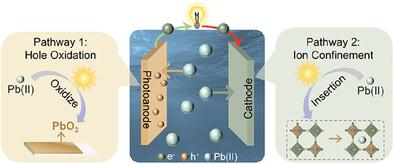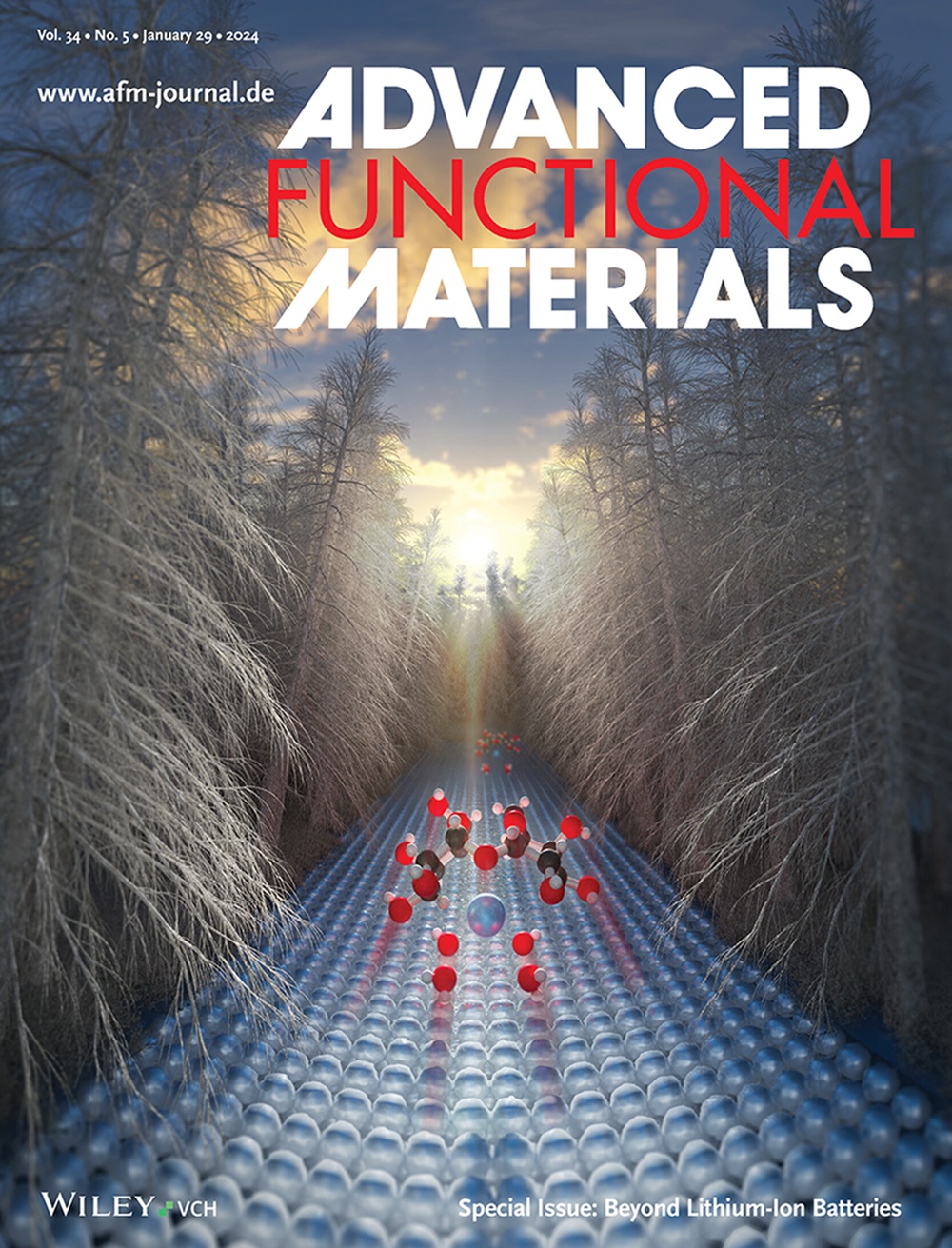Photo-Oxidation Coupled Ion Intercalation for Sustainable Heavy Metal Removal and Resource Recovery
IF 18.5
1区 材料科学
Q1 CHEMISTRY, MULTIDISCIPLINARY
引用次数: 0
Abstract
Developing innovative and efficient methods for heavy metal removal and resource recovery is crucial for advancing sustainable environmental remediation and resource management. Herein, a novel photoelectrochemical (PEC) system is presented that couples photo-oxidation with ion intercalation to achieve Pb(II) immobilization, removal, and recycling. This single-chamber, membrane-free PEC process integrates a titanium dioxide photoanode with abundant oxygen vacancies (TiO2-Ov) and a Prussian Blue analogue (PBA) cathode, enabling enhanced photogenerated charge separation and transfer under solar irradiation. At the photoanode, Pb(II) is oxidized to Pb(IV), forming stable PbO2 deposits, while the PBA cathode simultaneously confines Pb(II) ions through ion intercalation. This coupled pathway capitalizes on Pb(II)’s redox potential, achieving over 90% removal efficiency under mild conditions without secondary pollution. The system also facilitates real-time detection of lead contamination via a distinct color change at the photoanode, enhancing its practical applicability. Additionally, the recovered Pb(II) is converted into high-purity PbI2, a valuable material for perovskite solar cells, bridging environmental remediation with resource recovery. This PEC process offers a sustainable and scalable solution for heavy metal management, with significant implications for environmental chemistry, circular economy practices, and industrial sustainability.

求助全文
约1分钟内获得全文
求助全文
来源期刊

Advanced Functional Materials
工程技术-材料科学:综合
CiteScore
29.50
自引率
4.20%
发文量
2086
审稿时长
2.1 months
期刊介绍:
Firmly established as a top-tier materials science journal, Advanced Functional Materials reports breakthrough research in all aspects of materials science, including nanotechnology, chemistry, physics, and biology every week.
Advanced Functional Materials is known for its rapid and fair peer review, quality content, and high impact, making it the first choice of the international materials science community.
 求助内容:
求助内容: 应助结果提醒方式:
应助结果提醒方式:


